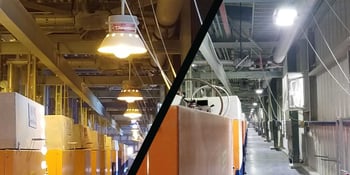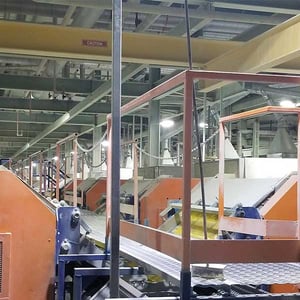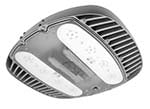LEDs consume less power, deliver more light, improve lighting quality, and reduce maintenance costs.
Explosion Proof or Hazardous Location designated spaces can challenge lighting specifiers.
While safety certifications from UL, LC, or CSA are a good starting point, it is not the only criterion to consider. Ambient temperatures, the presence of contaminants, and the use of space all play crucial roles.
Let's explore some of the advantages of LED lighting in hazardous locations:
Energy Efficient LEDs
LED consumes less power than conventional lights such as HID or Fluorescent. A decrease of 30-50% is rather typical for many applications. This reduction lowers fuel costs for remote sites and offers capacity for other equipment.
Higher Lumen per Watt Ratio in Fixtures
Despite operating on lower wattage, LED lights offer a higher lumen per watt ratio. If used well, this provides crucial improvements to visibility in hazardous areas. Mounting height, aiming, and spacing must consider the site's day-to-day operation.
Better visibility for operators helps with the prevention of trip and fall incidents. Achieving industry-specific target light levels while reducing the number of lights required. LED technology offers crisp illumination, free from flickers, for improved visibility and comfort.
Lower Case Temperatures
The efficiency of LEDs allows for a reduction of light fixture case temperatures. Nemalux fixtures radiate minimal amounts of heat. This feature further enhances their suitability for explosion proof and hazardous locations.
Traditional lighting fixtures generate heat as a byproduct, leading to potential injuries. Elevated case temperatures are a significant challenge in the presence of combustible dust. Certain materials have a sensitive ignition point, making using older technology undesirable.
In contrast, LEDs convert more of the electrical energy into illumination. This results in lower heat production and increased safety for employees. Investing in lighting upgrades enhances visibility and safety for operators. Resulting in reduced operating costs and the potential for unscheduled shutdowns. The final result also reduces the total lifecycle cost.
Longer Lasting Light Fixtures
Well-designed LED lights offer a usable life of well over ten years. Access can be a problem in explosion-proof and hazardous location-rated locations. Frequent bulb and ballast replacements, as well as unscheduled shutdowns, are costly. Disrupting the standard workflow in industrial settings. This disruption makes the switch to LED technology even more attractive.
 Unlike traditional light fixtures that use ballasts, LED lighting operates on power supplies. These offer higher efficiency and produce less heat, ensuring a longer system lifespan. LED-based light fixtures are absent of fragile filaments. As such, they are less susceptible to vibration and impact damage in harsh locations. Durable housing materials, impact-resistant lenses, superior gaskets, and electronics offer outstanding protection.
Unlike traditional light fixtures that use ballasts, LED lighting operates on power supplies. These offer higher efficiency and produce less heat, ensuring a longer system lifespan. LED-based light fixtures are absent of fragile filaments. As such, they are less susceptible to vibration and impact damage in harsh locations. Durable housing materials, impact-resistant lenses, superior gaskets, and electronics offer outstanding protection.
These features offer compliance with explosion proof and hazardous location requirements. The LED fixture delivers a light source that outlasts older technologies up to 3-5-7 times.
Explosion Proof and Hazardous Location Rated models with LEDs are available from Nemalux. Explore our current catalog and let us know if we can help. Choosing explosion proof LED lighting is crucial for ensuring safety in hazardous environments.
Better Performance Specification
Specifiers can highlight unique performance metrics aligned with best industry practices. Narrowband matching for the color temperature range of the light source on the Kelvin scale. Higher color rendering index to ensure a "true" representation of the color. Wide range of lumen output options based on flexible and programmable power supplies. Superior optical patterns to deliver light where needed and limit light pollution. Installation flexibility with the use of LED lighting options is a fact.


